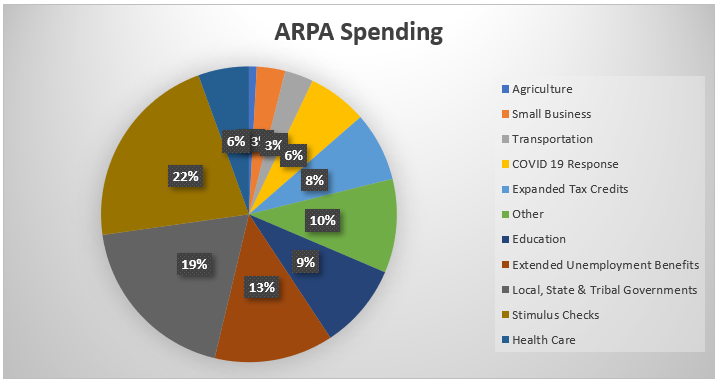The American Rescue Plan Act (ARPA) brings the total federal stimulus spending up to $6 T dollars with the addition of $1.9 T in ARPA. To paraphrase famous U.S. Senator Everett Dirksen from the 1960s, a trillion dollar here, a trillion dollars there, pretty soon you are starting to talk about real money. In broad terms, ARPA provided the following funding to key federal government priorities in response to COVID 19:
- $16B to agriculture programs;
- $56B to transportation programs;
- $59B to small businesses;
- $105B to health care programs;
- $123B to COVID 19 response programs;
- $143B in expanded tax credits;
- $176B to K-12 education, colleges and university and other education programs;
- $194B to other programs;
- $246B for extended unemployment programs;
- $360B for local, state, and tribal governments; and
- $410B for direct stimulus checks to taxpayers.

ARPA is working to prime the economic pump following the liberal economic policy of John Maynard Keynes that government spending in general can trigger an economic rebound. Whether Keynesian economics works or not, ARPA is an unprecedented opportunity to foster small business growth, develop sites, fund infrastructure and broadband projects to support economic development and corporate site location through new, targeted federal funding.